This is the second and final part of the series by Mr. Dean on the Penn State Child Abuse Scandal. The previous part appeared here on Justia’s Verdict on Friday July 27. –Ed.
At a July 12th press conference, former federal judge and one-time Director of the FBI Louis Freeh released his investigative report on the child-sex-abuse scandal at Pennsylvania State University (Penn State). Freeh refused to characterize the “agreement to conceal” that he found had been undertaken by the top men at Penn State as a conspiracy to obstruct justice, for that was a legal conclusion for others with prosecutorial authority to decide.
In contrast, Freeh’s charge was to uncover what had occurred, and lay it out, which he did without fear or favor. He included in his report matters relating to his client the Board of Trustees of Penn State, who had so instructed him when retaining Freeh Sporkin & Sullivan.
Without reaching legal conclusions, Judge Freeh did say that top officials at Penn State were motivated to “avoid the consequences of bad publicity,” which included everything from government investigation, to the impact on fundraising, to the effect on the University’s brand, to issues involving personal liability.
In short, Freeh found—without so describing it, in light of his limited mandate—a conspicuous cover-up of former coach Jerry Sandusky’s criminal abuse of young boys at Penn State.
Where Were the Lawyers?
When scandals like Penn State occur, it is inevitable that a key question will be asked: Where were the lawyers, when all this was going on? For example, that question arose with the Enron scandal, as it had decades earlier with Watergate. Indeed, it is a recurring question because the absence or abdication of attorneys when they are needed is a recurring problem.
Stephen Hirschfeld, a founding partner at Curiale Hirschfeld Kraemer who specializes in employment law and internal investigations at universities, explained to Corporate Counsel, “It’s not uncommon for general counsel in these situations to be caught in the middle.” He noted, “They feel a great loyalty to the president, because that’s their day-to-day client, but their real duty-of-loyalty and ethical obligations are to the institution, not to an individual.”
As Jim Robenalt explained in remarks I quoted in my prior column on this matter, under the ethics rules now governing lawyers, Rule 1.13, Penn State’s general counsel and outside counsel should have been concerned about Penn State itself, rather than about those employed by the university. But that obligation alone does not prevent such failures in institutional behavior from occurring.
There is something else going on in situations like Penn State, Enron, and Watergate, which if understood and appreciated can, in fact, prevent lawyers from making the grievous mistake of getting caught up in a cover-up.
The Psychology of Cover-up: The Loss Frame
Recently, I had an opportunity to participate in a keynote panel at the ABA’s National Conference on Professional Responsibility in Boston entitled: “Watergate: 40 Years and Not Yet History.” I was joined by Beth Nolan, White House Counsel for President Clinton; Richard W. Painter, Associate White House Counsel for Ethics under President G.W. Bush; and Roger M. Witten, an Assistant Watergate Special Prosecutor, moderated. It proved to be an insightful session for me, and hopefully also for the audience.
Richard Painter has done some remarkable work in analyzing what he calls “the psychology of cover-ups.” Drawing on the work of Nobel Prize laureates Daniel Kahneman and Amos Tversky, and their now classic 1979 essay “Prospect Theory: An Analysis of Decision Under Risk,” Richard notes how persons who find themselves in “loss frames” (or losing situations) are inclined to take greater risks to avoid even more loss, even when the risks are irrational, than others. In addition, the loss frame creates a “cognitive bias toward concealment.” Richard thought that this might have happened to Nixon and others with Watergate. I can confirm without any doubt that he was correct: That was the case for us all.
When one looks at situations like that of Penn State (or Enron and countless other related situations) it is obvious that bad, if not irrational decision-making, is almost the norm in the loss frame. But these insights, as Richard Painter has written, not only explain how lawyers (and others) make serious mistakes in these situations, but also provide a means to prevent this from occurring.
Dealing With Loss Frame Situations
The Penn State cover-up is merely the latest high-profile example of what so easily happens in loss-frame situations, with the cognitive bias toward concealment playing itself out in this situation to tragic ends. There are a couple of obvious ways to deal with such situations, a description of which should be valuable not only to lawyers generally, but also, and particularly, to lawyers who are dealing with this state of affairs.
First, understanding the very fact that you are in a loss-frame situation is essential. The earlier you recognize the problem, the better. Recognizing that your decision-making in the loss-frame situation will likely be seriously flawed is the starting point. And attorneys, because of their profession, are regularly and uniquely exposed to loss-frame circumstances, as the general counsel and outside counsel at Penn State discovered.
As I see it, there is only one way to deal with a loss-frame situation, after recognizing that you are in such a situation. To emphasize and paraphrase Richard Painter: GET THE RELEVANT INFORMATION TO A PERSON WHO IS NOT IN THE LOSS FRAME. This is why collaboration with others is vital. Attorneys do not violate the attorney-client privilege when they hire an outside attorney for such consultation, or talk with their partners who are not involved with the matter.
And this is the genius of the “reporting up” requirement of the ABA’s Model Rules. (The same requirement pertains for corporate attorneys under the Sarbanes-Oxley Act, as well.) The reporting up requirement enables attorneys to find others up the ladder who are not in the loss frame. (And, if those up the ladder are involved, the attorney must get an outside counsel who is not involved.)
If you show me a cover-up that collapsed into a disaster, involving people with no responsibility for creating the loss frame, I will show you a situation that could have been addressed by bringing in outside persons who were not in the loss frame.
Penn State Was In a Classic Loss-Frame Situation
Jerry Sandusky created a loss frame for Penn State. As the Freeh Report sets forth, all who learned of Sandusky’s behavior feared the consequences that would fall upon them personally. Thus, each became enmeshed in his own loss frame.
Loss frames are easily contagious. Rather than report up to the Penn State Board of Trustees—the members of which were not in the loss frame and could have objectively addressed the problem—information was withheld from the Board. Rather than the general counsel’s and outside counsel’s hiring someone like Judge Freeh who could objectively investigate and address the matter before it had ballooned into disaster for Penn State, the key information was never given to anyone who was not themselves in a potential loss circumstance.
In short, cutting and exposing losses is ALWAYS the best course—and the only safe solution. Getting an outsider involved is always helpful, if not essential. These are the sure ways to minimize if not avoid serious professional mistakes.







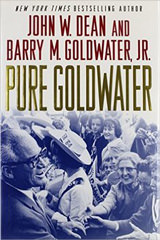
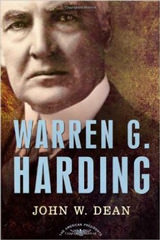



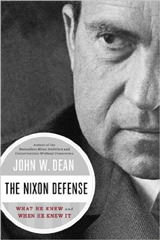
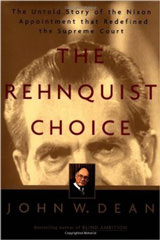
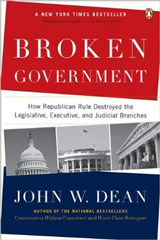
Nixon’s visit to China 40 years ago ‘changed the world’ and received universal acclaim. Yet he was the first president ever to resign in office. Was Watergate any worse or out of character with the actions of Presidents before and after? The recent doubts, about the veracity of the book and film “All the President’s Men” are not the only problems. We also now know that selected information pertaining to the Watergate arrests were kept from the public. Why the secrecy? If we are to get at the truth we must have answers to the following questions and an open mind:
Why were the culprits arrested at the THIRD attempt to break into Watergate? Some of the details are franky bizarre – at the first attempt the culprits ate at a table booked using a letter head of a company with one of Cubans as director; at the second attempt the culprits march in through the front door and signed the Watergate visitor’s book. These were supposed to be professional ex-CIA operatives. Why did the $100 dollar bills found on the culprits have consecutive serial numbers? Why were Howard Hunt’s details in the address books of TWO of the four arrested Cubans? Was Watergate a setup with evidence pointing to the Nixon White House? What crucial information was leaked illegally by the member of the grand jury to Carl Bernstein? Once a meme that there was ‘wrong doing’ at the Nixon White House had taken root, only the very foolhardy would dare to question its premise. Why would Nixon pass the FEC Act if he was such a bad egg? Why would Nixon order the Watergate raid when he was already 26 points ahead of Senator McGovern? Bob Haldeman never admitted to being guilty.
Did Nixon resign to protect the Freedom of the Press, a vital component of the US Constitution that he had sworn TWICE on the family bible to defend? Is there another possibility that has never been investigated or suspected? Why was the press out to hound and crucify him when other guilty presidents were ‘let off’? It is relatively easy to spread flsehood as the public has very short memory.
Nixon’s sacrificial resignation was to preserve the Freedom of the Press and to prevent the country from splitting. Read “The Six Crisis” to find out more about the man.
The official version of the identity of’Deep Throast’ in Vanity Fair is too glib and is probably a distraction. It is the same myth that has been pepetuated about Watergate and takes us even further from the truth.
Read about all these in ‘Watergate – The Political Assassination’, ISBN 9780956911940. Is there any merit in the hypothesis?